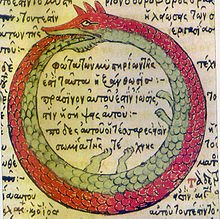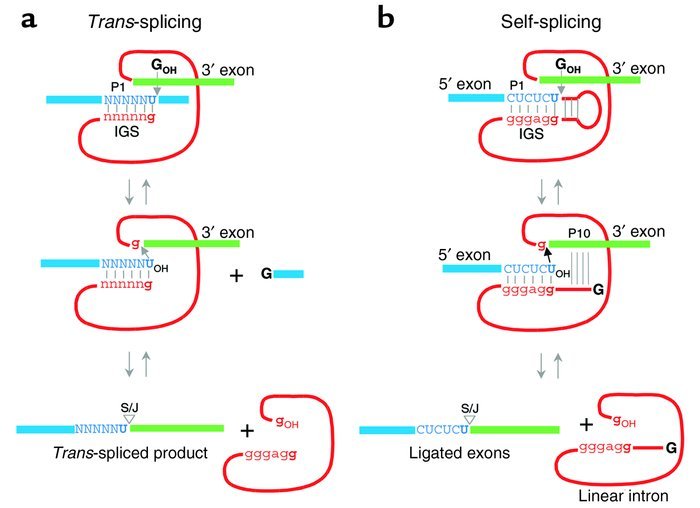If I were to tell you that reality is a kind of book that is writing itself, you'd probably declare me bonkers. If I were to tell you that there are even scientists, who seriously contemplate this surreal idea in the form of a self-processing sentient language that creates reality by modifying itself, you'd probably get the hell out of my vicinity as fast as you could. The fact that I even dare to mention these unicorn fables, will probably make you put away this article at this very moment.
If you still continue reading, you might have a sense of humour or curiosity to see how people end up contemplating such rubbish. After all, language is a high-level phenomenon. Surely these people mistake the map and the territory. Or maybe you find it fascinating that someone came up with the bizarre and unrealistic idea to unify the ontic and the epistemic under one banner.
But if I tell you there are certain subtypes of a molecule called ribonucleic acid (RNA), which almost hit all the marks to qualify as real life representatives of this concept, you might be willing to lend me a listening ear. After all such a concept might have technological applications in biotech or in artificial intelligence in the form of an algorithm that can create complexity by recursive self-modification to generate a more dynamic version of the computer program called "game of life".
RNA is the nucleic acid molecule that preceded the better known nucleic acid carrier of inheritable traits called DNA in evolution. Certain viruses, proto-life forms, do not have a DNA but an RNA molecule instead. RNA is also present as an essential constituent in the cells of every life form. Nucleic acids are like a code with four symbols, which are present in the form of two pairs of complementary molecular motifs called nucleotides. They encode proteins. The code can be read by other nucleic acids that dock to the code if they have the complementary code. This can then trigger the assembly of proteins from amino acids. It can also result in the further assembly of a complementary nucleic acid strand, which is a form of copying the code. So basically nucleic acids function as a kind of cellular computer, which takes other nucleic acid molecules as input and provides proteins or nucleic acids as output.
Certain types of RNA can fold back on themselves and have stretches of their nucleotides pair, so that you get a kind of lariat form. Where did I see this before? It reminds me of the alchemical symbol of the Ouroboros, the snake that bites its own tail and thereby gets to know itself. An ancient symbol of the self-reflective nature of consciousness.

Image of Ouroboros
Source: upload.wikimedia.org/wikipedia/commons/thumb/7/71/Serpiente_alquimica.jpg
Now certain RNA molecules can process i.e. modify themselves when they interact with themselves. Often this results in cutting of a part of itself (self-splicing), but it can also result in extending itself.

Image of self-splicing RNA
Source: dm5migu4zj3pb.cloudfront.net/manuscripts/19000/19386/medium/JCI0319386.f1.jpg
In other words, these RNA molecules constitute a kind of code or language, if you wish, that recognises and reads itself and modifies itself as a consequence thereof.
The only aspect which a priori appears to be missing from the earlier mentioned concept of a self-processing sentient language that creates reality by modifying itself, is the "sentience" aspect. You could argue that the molecular interactions that lead to the mutual recognition of the motifs are sensed in a certain way; it is not merely the fitting of pieces of a jigsaw puzzle: electronic charges attract and repel each other and hydrogen bonds are formed. If we accept this as a form of primitive sentience, this molecule hits all the marks to qualify as an instance of the previously defined concept. When it comes to RNA maps can be territories simultaneously. So a self-processing sentient language that creates reality by modifying itself might after all not be such a surreal concept.
In the last decades some idealist-type ideas have been suggested by outsiders with respect to philosophy, who suggest that virtually everything in reality is the result of such a "Recursive Self-Modification" of a code. In view of the RNA example, perhaps they do merit our consideration, if not for philosophical reasons then at least for the potential technological relevance or as an aesthetic enrichment of the human epistome (i.e. the complete collection of all that is known in imitation of terminologies such as genome and proteome).
Many of these ideas find their origin in a branch of physics called digital physics. Not energy, but information is considered to be at the root of reality. But this introduces a problem, because information implies meaning conveyed by symbolism and requires a mind or at least consciousness to recognise or make sense of the meaning. And this brings us back to the age-old problem of the Cartesian Mind-Body dualism. So if information is at the root of the manifested reality, consciousness must somehow be present at a deeper non-manifested level.
In this essay I will show you how a number different scientists and garden-variety philosophers have come up with a suggested solution to this problem, the common denominator of which is the notion of Recursive Self-Modification. I will give an overview of a number of such contemporary "mind=reality theories", which consider reality as the product of a cognitive self-processing language. I will discuss a number of similarities between Langan’s Cognitive Theoretic Model of the Universe (CTMU), Irwin’s Code Theoretic Axiom (CTA), Kaufman’s Unified Reality Theory (URT), Tsang’s Brain Fractal Theory (BFT) and Deli’s Science of Consciousness (SoC). I will also discuss the idiosyncrasies which makes each of these theories unique. Aspects as neural networks, fractals, category theory and the Yoneda Lemma and their implication for sentience, self-reference and self-processing will be discussed. Finally, I’ll try to suggest how these different complementary frameworks can be integrated in order to evolve towards a Theory of Everything, with the ultimate aim of providing a sound metaphysical basis for physics without the usual paradoxes that arise from the underlying self-reference.
Although I do not take most of these theories seriously over their whole scope, it is neither my intent to use this essay to systematically undermine each of these theories, nor is it my intent to defend them against criticism. Rather, I'd like to review them in order to distil useful notions worthy of further exploration.
...
Interested in reading more of this chapter? The book “Is Reality a Simulation? An Anthology”, which I, Antonin Tuynman (a.k.a. Technovedanta) edited and co-authored is now available as Hardcopy and as Kindle ebook. But you can get a free pdf, if you promise me to write a review and post it on Amazon, Goodreads and Lulu. For a free pdf send an email to iconomen at gmail dot com.
...
Interested in reading more of this chapter? The book “Is Reality a Simulation? An Anthology”, which I, Antonin Tuynman (a.k.a. Technovedanta) edited and co-authored is now available as Hardcopy and as Kindle ebook. But you can get a free pdf, if you promise me to write a review and post it on Amazon, Goodreads and Lulu. For a free pdf send an email to iconomen at gmail dot com.

No comments:
Post a Comment